Make these Easy Organic Fertilizers at home using everyday ingredients so that you can feed your plants naturally and grow lots more food! It is important to feed your plants as they use up the nutrients in the soil to grow and produce food. It is also important to use organic, natural fertilizers so that we..
1 – don’t consume harmful synthetic toxins but also..
2 – don’t have harmful toxins upsetting the microbiology and killing off all the amazing beneficial insects and pollinators.
There are a bunch of natural ingredients you use every day that can be easily turned into natural, organic fertilizers to help feed and nourish your plants. There are also some plants that you can specifically grow to make your own organic fertilizers. Keep reading below to find out how you can level up your garden’s production with these easy organic fertilizers.
Plus, it’s a great way to reduce waste and get the most out of everything in your home. We can be so quick to throw things out or put them straight in the compost but many items can be used again first! This also means you are getting more bang for your buck and saves you spending money on fertilizers. So you can spend more money on plants.
I use an easy dilution spray bottle for all garden fertilizers.
1. Rice Water
The water that is left behind after rice has been cooked makes an easy organic fertilizer for your plants. It contains starch and small amounts of NPK. Which are Nitrogen, Phosphorus, and Potassium. These are all essential for plant health and growth. In basic terms, Nitrogen is good for producing leaves and greens but if your soil is too high in Nitrogen, you will get all leaves and no actual fruit or vegetable. Phosphorus is good for cell growth and division, so it is essential for seedlings. Potassium is great for promoting fruiting and flowering in plants. Having a good balance of NPK in your soil is important. As your plants grow they will use up different levels of each so it is important to replenish with fertilizers.
The NPK in Rice water is low in quantity so you won’t have to worry about over-fertilizing and it helps you build healthy soil, whilst minimizing waste. Make sure that you don’t add salt to the water or this will not be good for your plants. It is also important to make sure the water has completely cooled down first. Use the rice water fresh as you make it as it doesn’t store well.
2. Pasta Water
Just like the rice water, pasta water will leave behind starch, which can be used to feed your plants. Dilute the mixture if it looks too cloudy or there is not much liquid and this will give you more fertilizer and ensure you don’t overfeed.
3. Potato Water
When you have boiled potatoes, the leftover water will be full of starch and beneficial nutrients. Again, similar to the Rice and Pasta, make sure you haven’t added salt and let the water cool completely.
4. Eggshell Water
Don’t throw out the water left over after boiling eggs. Let it cool, and use it to feed and water your plants. This is such an easy organic fertilizer! This water will add a small boost of nutrients and calcium to the soil. You can also boil leftover eggshells that have been cracked to fry eggs or have been used for baking. Then after that, crush up the eggshells and add them to the compost for extra calcium or sprinkle them around your seedlings as natural pest control to help deter slugs and snails. There are so many ways eggshells can be used to boost your garden’s health.
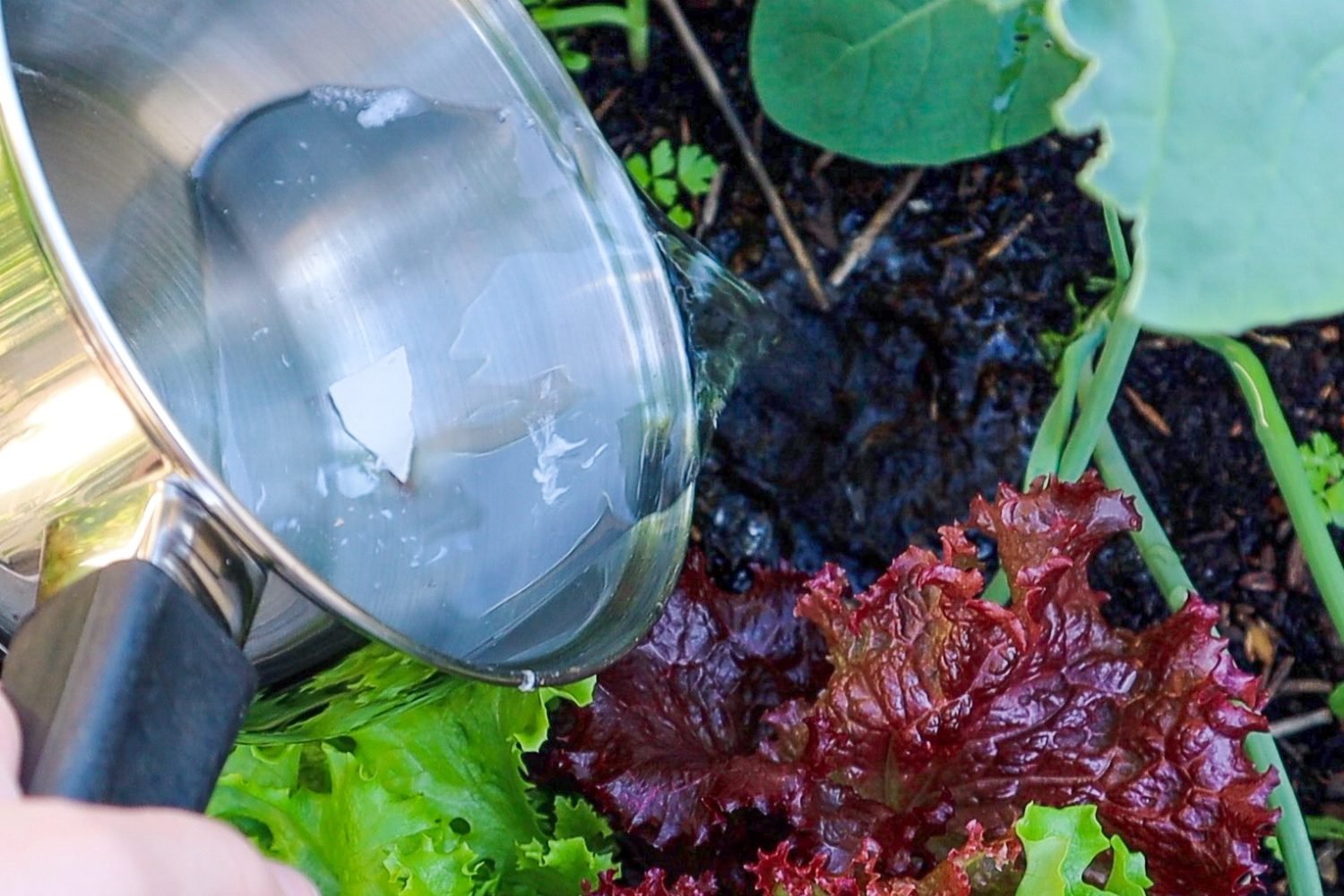
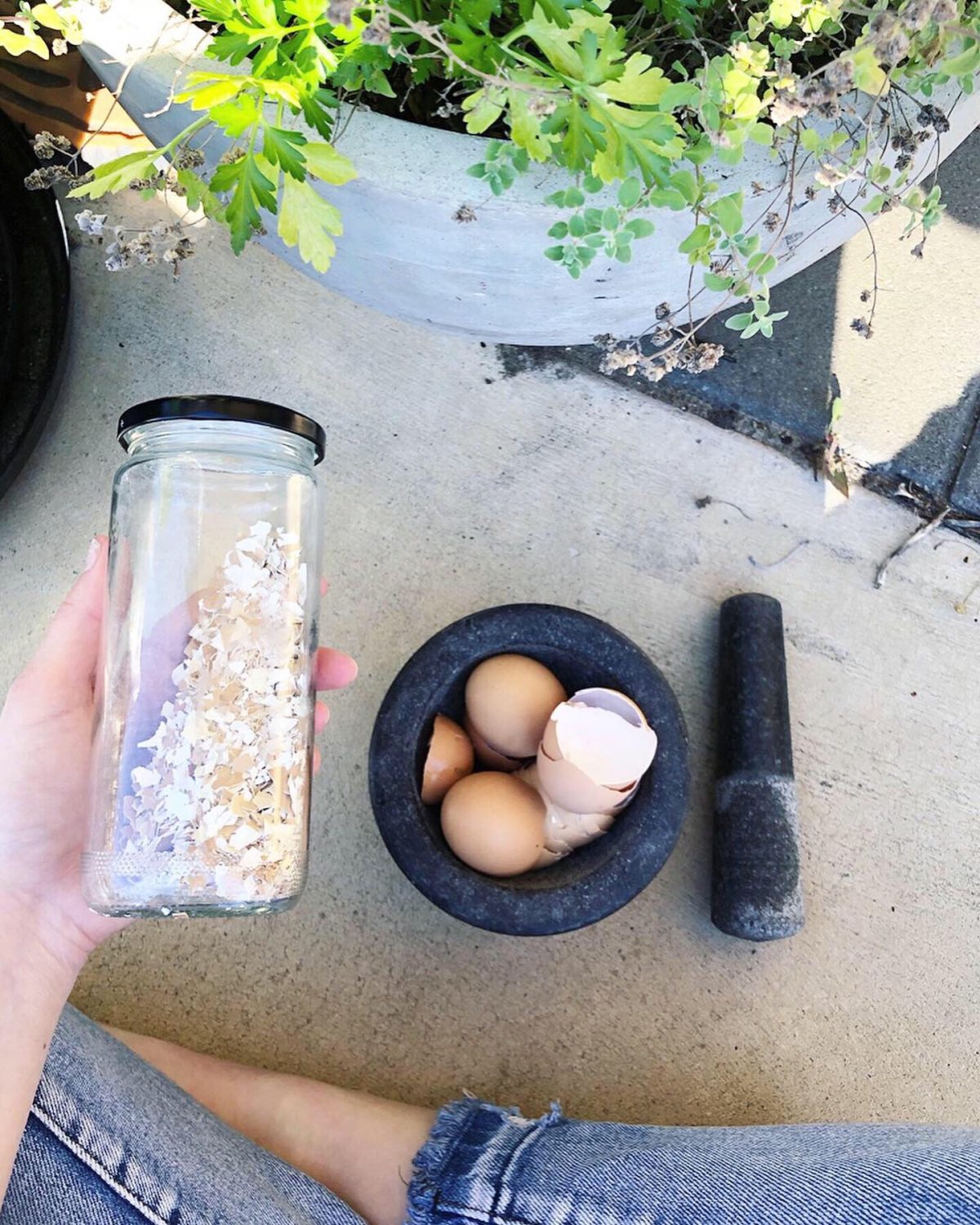
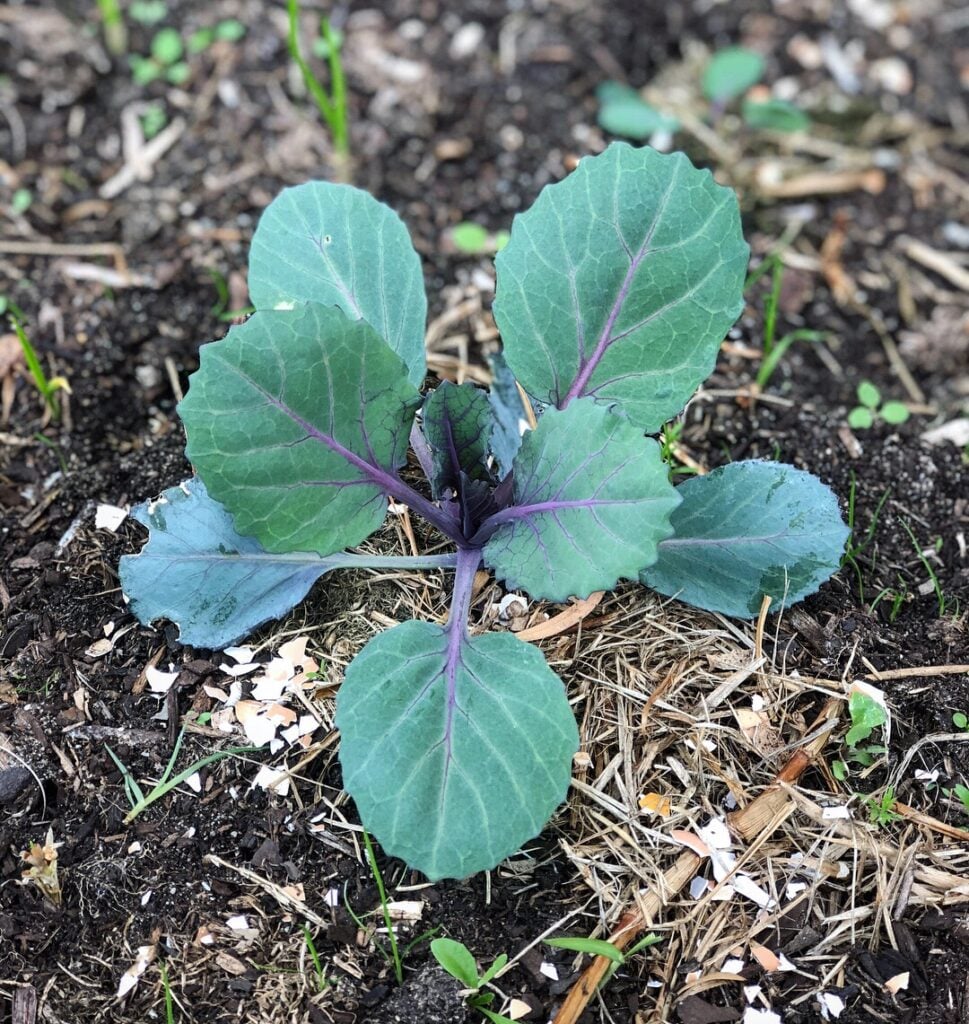
5. Vegetable Water
Reuse the leftover water from boiling or steaming vegetables as a natural organic fertilizer. For most vegetables that you boil or steam, the water can be used to fertilize your plants. Just be aware that some ingredients may cause strong odors so for Brassicas, Broccoli, Cauliflower, or Cabbage. Only use on outdoor plants as the water will start to have a strong odor. No one wants their house to start smelling like farts!
6. Banana Peels
Banana peels are something that many of us have at home, and they make a great natural fertilizer for your plants. As many of you might know, bananas are high in Potassium and in the plant world Potassium is an essential nutrient for plant growth. Here in Perth, our sandy soils often leach out Potassium, so it is important that we add it back in regularly. Fruiting plants can often require extra Potassium to produce good yields, improve the flavour of the fruit, and increase flower production. Potassium also helps strengthen plants – it thickens their cell walls to make them grow big and strong. I will often prioritize feeding my fruit trees when I’m making this Banana Peel Fertilizer.
There are a few different ways to make Banana Peel Fertilizer and I rotate through using them all. The easiest way by far is just to put the peel in the compost or bury the banana peel in the garden. This will slowly break down and release nutrients into the soil to feed your plants. However, there are a few ways to speed up the process of extracting the nutrients.
Chop up your banana peel and add it to a jar of water. I leave this on my bench with a cloth over the top. You don’t want bugs to get in, but you want it to breathe. Then over the next few days, as I only eat one banana a day, I add it to the jar. You can start using this after one day, but I like to let mine go for about 3 day,s stirring it each time I add another peel. Then you can strain off the banana peels, keep them to add to the compost or bury them in the garden. Then dilute your water by 50% or more. If I just have one banana peel, I may not dilute I,t but with three, there are plenty of nutrients to be diluted and spread across more plants.
You can also chop up your banana peels and let them dry out in the sun and then blitz them up into a powder. Add this powder to water or just sprinkle it around your plants.
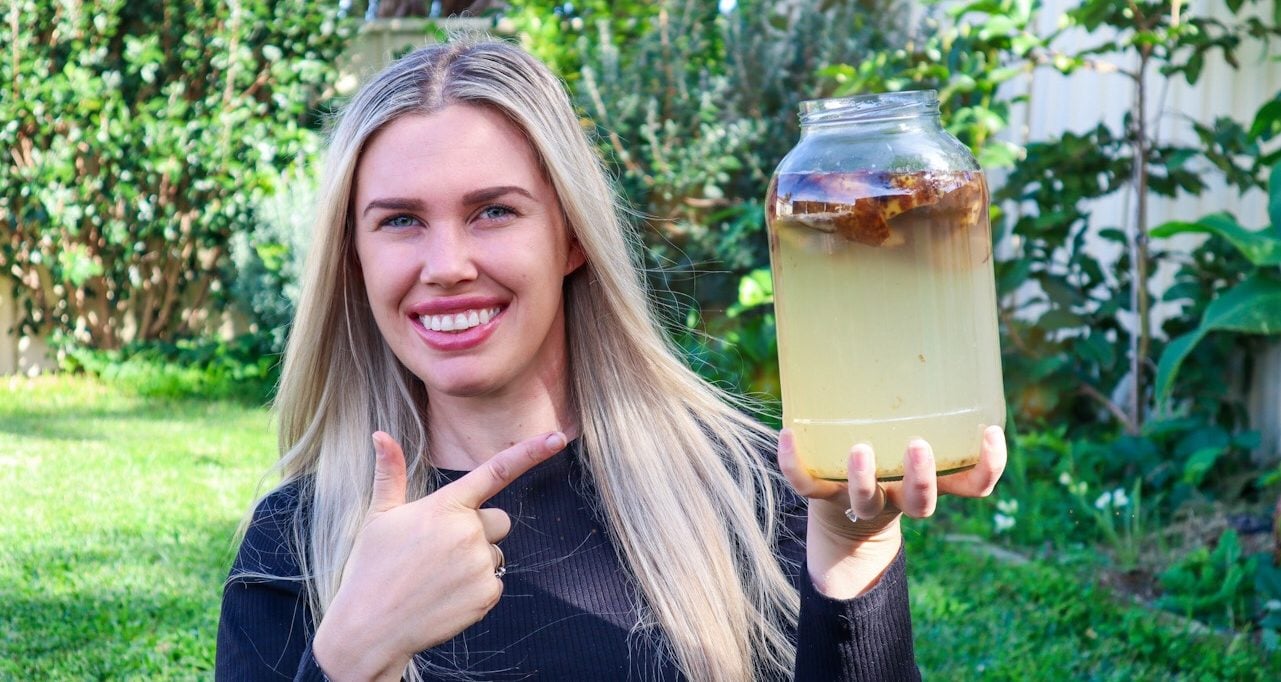
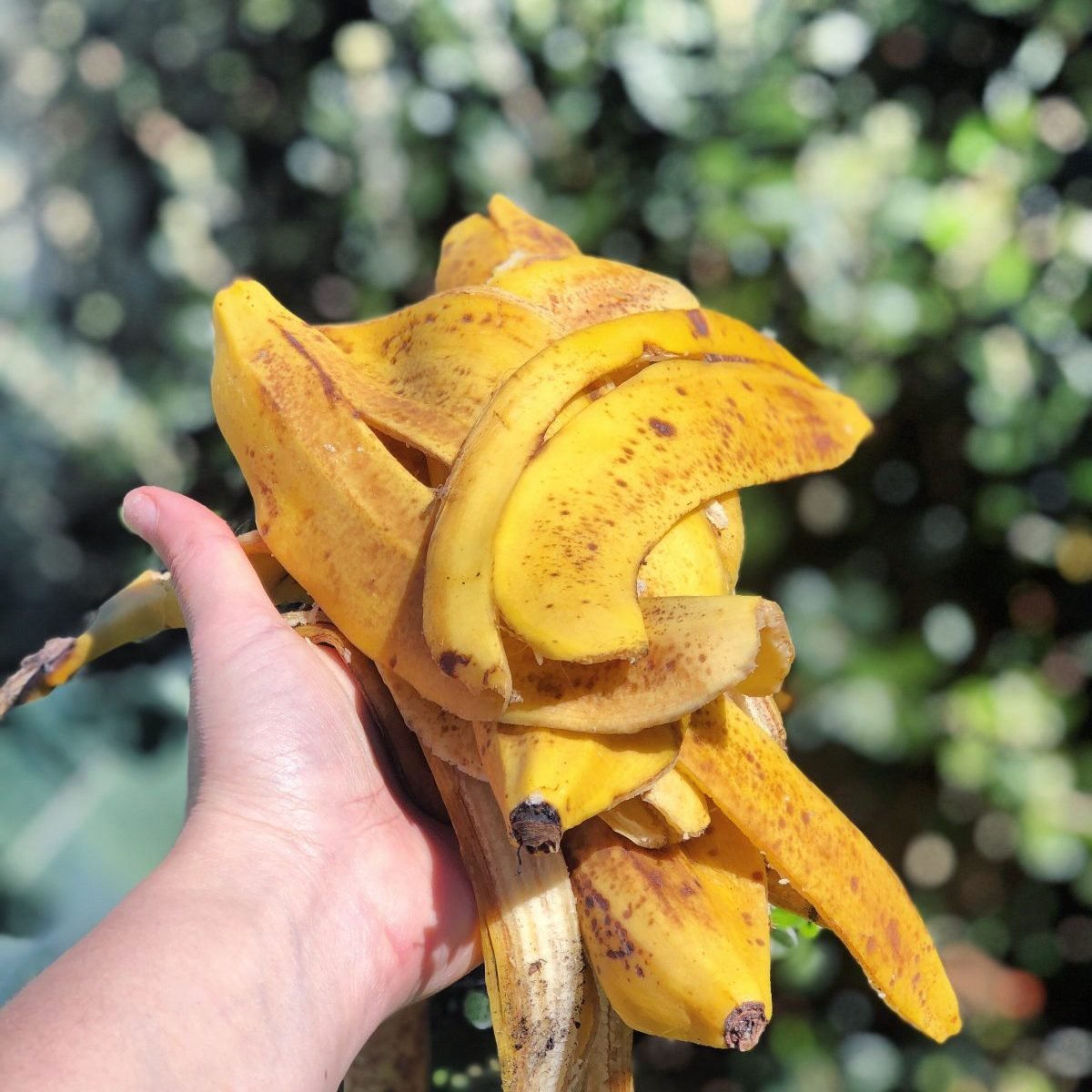
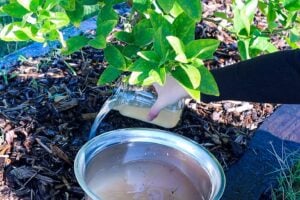
7. Coffee Grounds
Used coffee grounds are great for the garden and can add a boost of nutrition to your plants while building healthy soil. Used coffee grounds ( filtered through water) are nearly pH neutral. They are rich in Nitrogen and Potassium, which are both essential nutrients. Although they are brown in colour, they are rich in Nitrogen, so coffee grounds are classed as “green” when you are composting.
There are heaps of ways to incorporate coffee grounds into your garden. You can add them straight to your compost, sprinkle them around your plants or dilute them with water for a liquid fertilizer. Coffee Grounds are also great for natural pest management and can deter lots of unwanted pests from your delicate seedlings. I have even read that coffee grounds can deter cats, so if you are having a problem with cats in your garden, this is worth a try as it only benefits the soil and the plants.
To make the liquid fertilizer from Coffee Grounds, add a cup of used coffee grounds to a bucket of water and let it sit for a day or so. Then you have a liquid fertilizer to feed your plants. If you don’t have any coffee grounds, try visiting your local barista or cafe as they often just throw away the grounds and would be happy for you to take them off their hands! A win for them, your garden, and the planet!

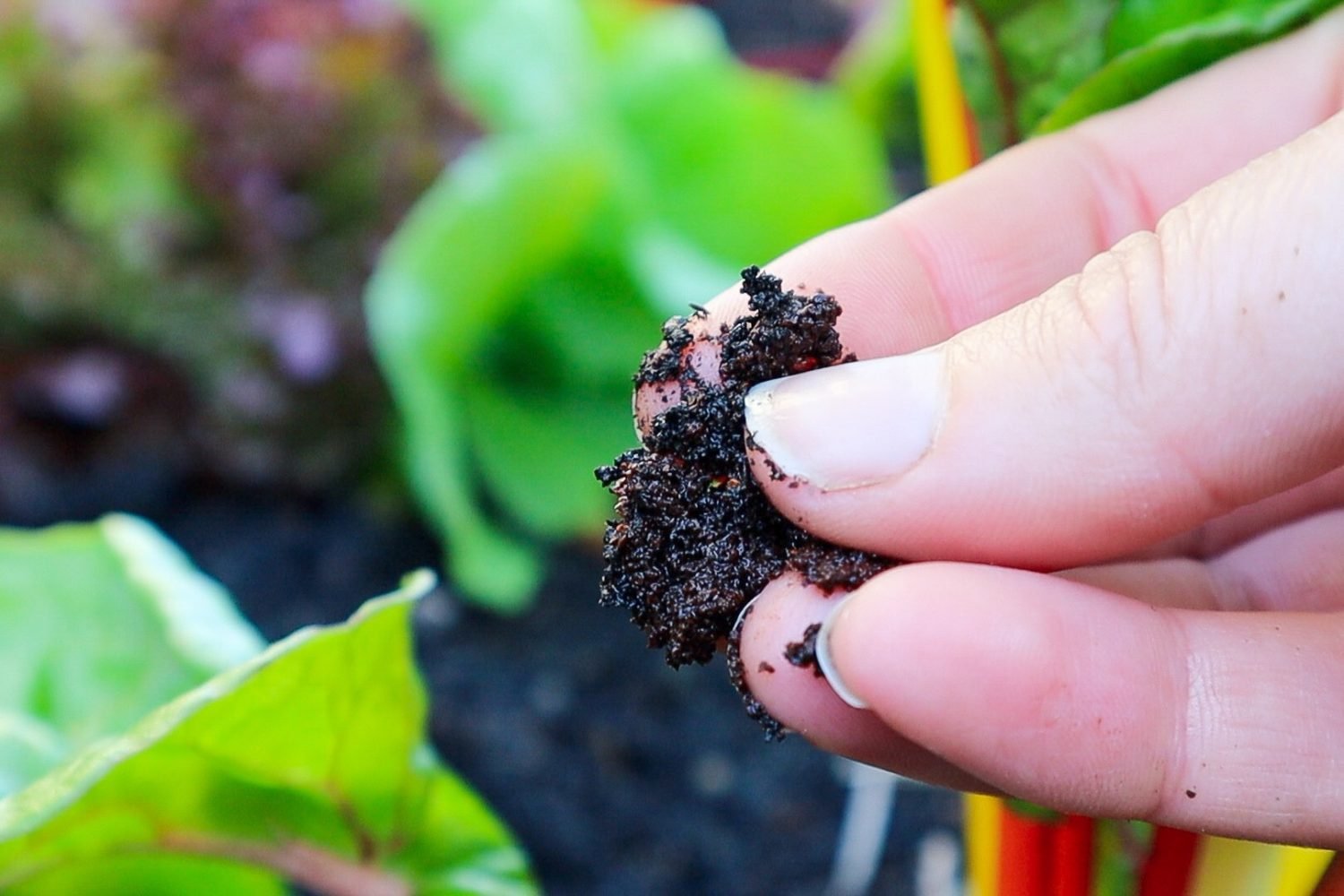
8. Fish Tank Water
If you have freshwater fish tanks, ponds, or aquaponic systems, the water is a great liquid fertilizer to feed your plants. The fish poop and plant matter will be great for your garden. Don’t use saltwater tank water as this will probably kill your plants, which we don’t want.
If you have freshwater fish tanks, ponds, or aquaponic systems, the water is a great liquid fertilizer to feed your plants. The fish poop and plant matter will be great for your garden. Don’t use saltwater tank water as this will probably kill your plants, which we don’t want.
9. Wood Ash
The leftover ash from your wood fire is great to feed your garden. Use the light grey coloured ash at the bottom of your fireplace not the black chunks of coal. This one can be a little more technical for beginner gardeners so it might be best to try the other fertilizer options first. Wood ash is high in Potassium and raises the pH of your soil. So do not use it on acidic-loving plants such as Blueberries.
It’s best to add wood ash in small quantities and mix it through your gardens or compost so as to not raise the pH of your soil too much (unless this is something you are trying to achieve). Also, it is very important to note: only use wood ash from chemical-free, untreated wood. Burnt wood that is treated with chemicals will still have traces left over and that is not okay for edible plants.
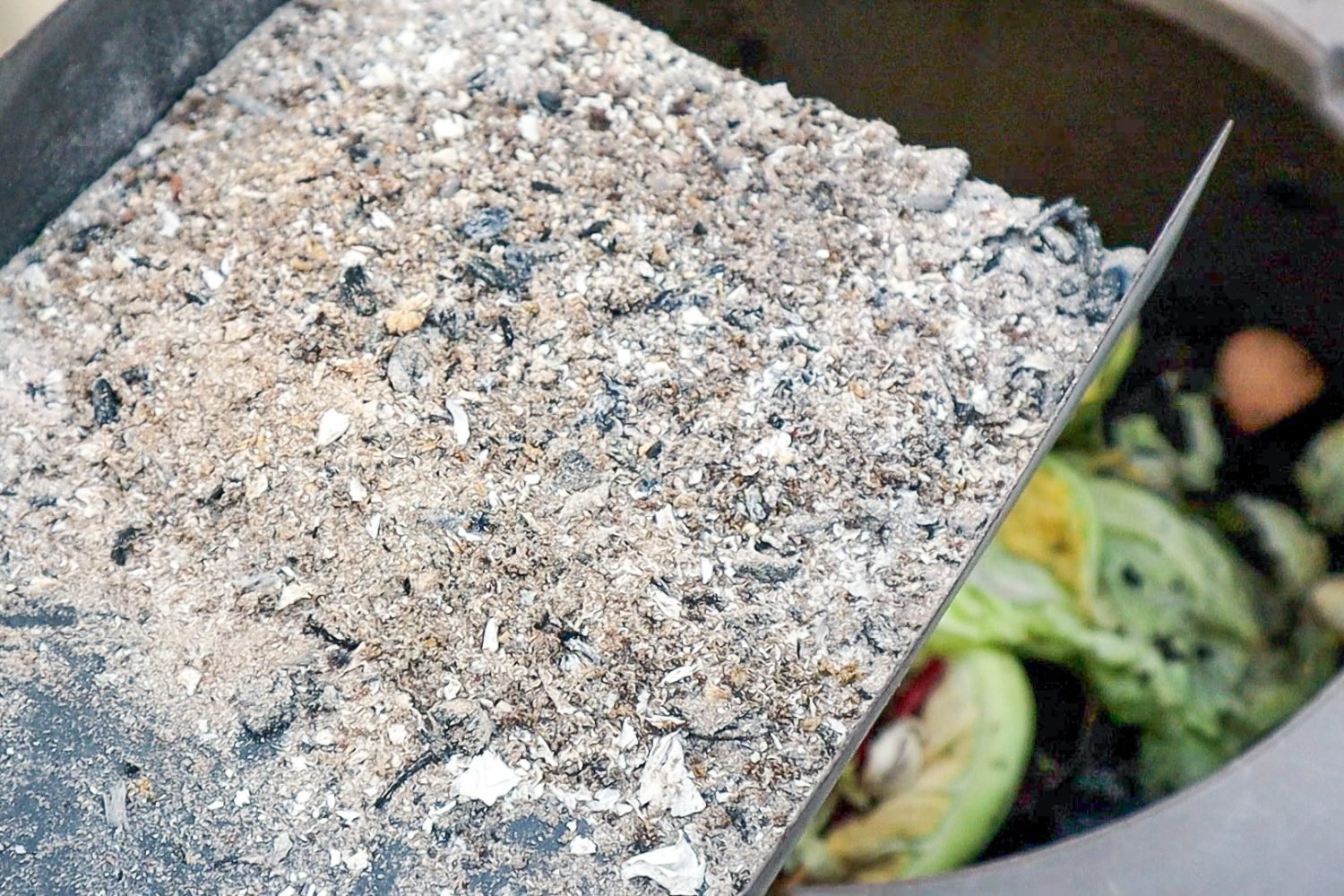
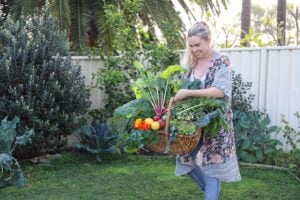
10. Compost Tea
Compost tea is great if you have potted plants and don’t have room to add extra soil to top up the nutrients. To make this easy organic fertilizer, place a few handfuls of compost in a bucket of water and stir. Allow it to sit for 2- 24 hours to mix and infuse into the water. With all fertilizers, use rainwater when possible, as tap water is often treated with chemicals that can actually kill off all the good bacteria that we are trying to feed. If you only have access to tap water, you can let it sit in a bucket for a day, and a lot of the chlorine will evaporate off. Next time it’s raining, chuck a bucket out and capture some of that amazing natural water to use. It really does make a big difference!
11. Liquid Seaweed
You can buy organic seaweed concentrates to mix with water and make liquid fertilizers. This is something that I always have on hand and is the only fertilizer that I buy. But, if you live near the ocean, you can make your own! Be aware of your local rules and regulations as it is illegal to remove seaweed in some locations. Even if it has washed up on the beach. If you can source seaweed, ferment it in a bucket of water for a week or more, and brew up your own organic fertilizer. Once the water is a dark colour, it will definitely have a strong, smelly pong to it! Strain off the liquid and dilute it with more water. Add the leftover seaweed to the compost or the garden to fully break down asa slow-release fertilizer.
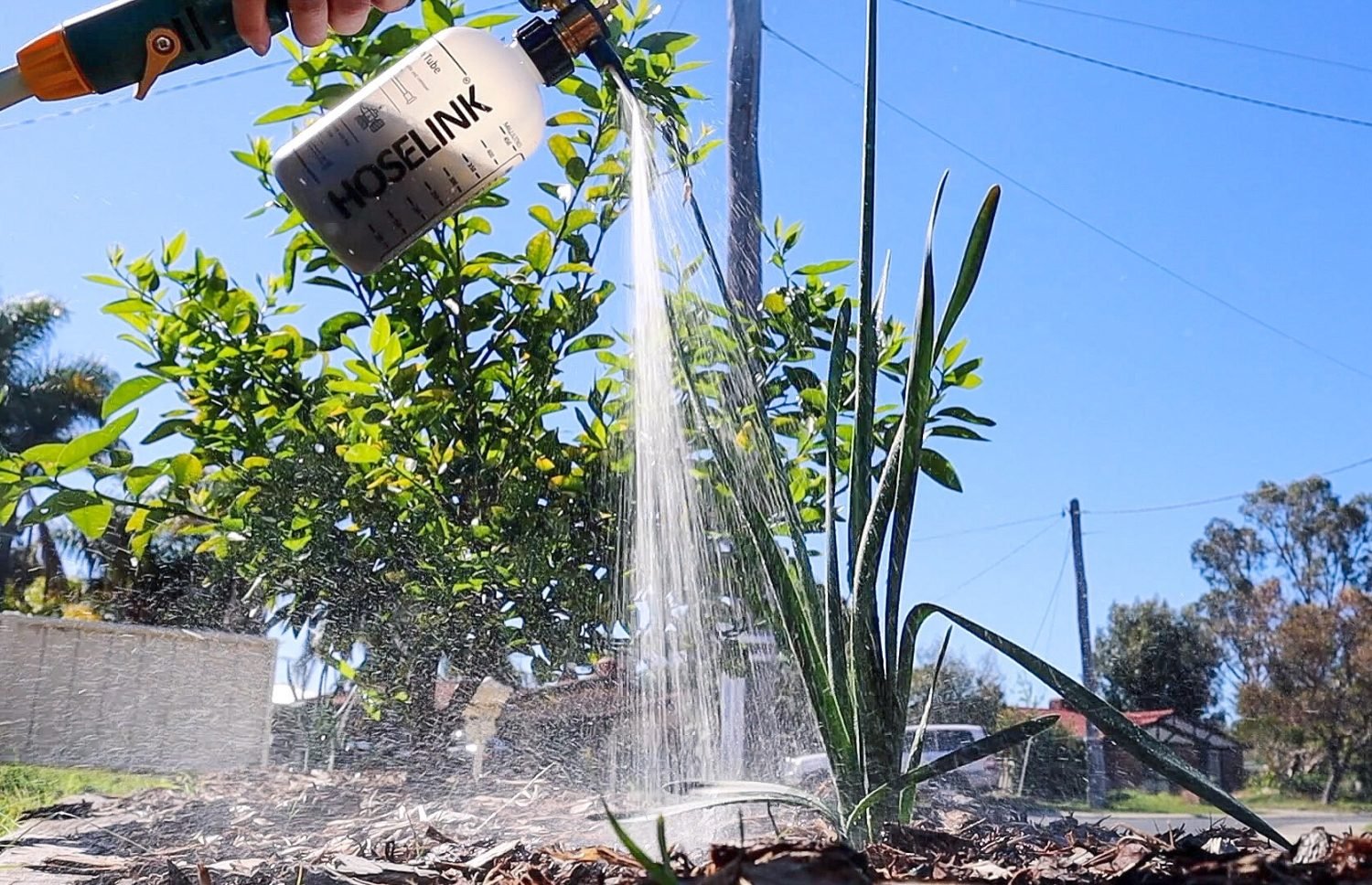
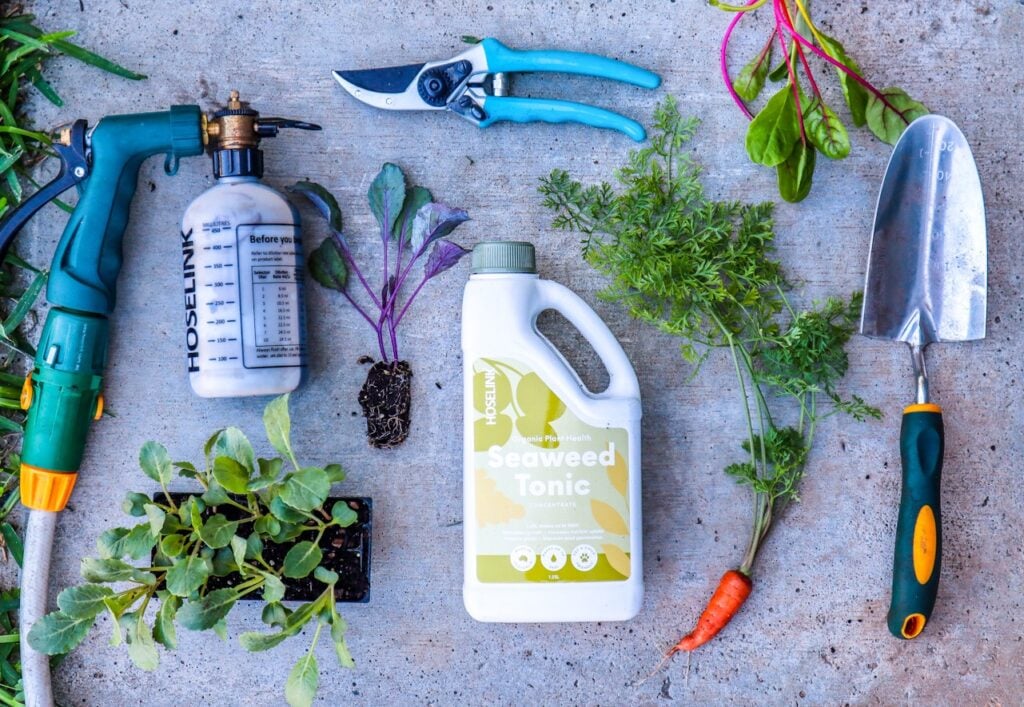
12. Comfrey Tea
Comfrey is great to grow in your garden, purely to help you build good soil. The Comfrey plant contains high levels of NPK, which as we now know are essential for plant health. It also contains many other beneficial nutrients and minerals. Comfrey also provides a great cover for your soil and a habitat for beneficial insects. It also has beautiful flowers for pollinators. Because of all these great relationships, Comfrey is a top permaculture plant. If you plan on growing your own food, you may as well grow your own organic fertilizer!
Comfrey has deep roots that go deep down and draw up all the good nutrients. It produces lots of big, lush leaves, which can add great plant matter, nutrients and fibre to your soils. Sandy or clay-rich soils need lots of fibre added to either help retain moisture (sandy soils) or break up the soil and allow better drainage (clay-rich soils). Here in Perth, my soils are super sandy. I often chop and drop layers of mulch to add more fibre and help reduce the concentration of sand. Sandy soils let all the moisture and nutrients drain away and we don’t want that!
Just like the banana peels, there are multiple ways to extract the nutrients from the Comfrey plant. One way is to just “chop and drop”. That is a term I use quite a lot as it’s one of my favourite methods because so easy! It is important to have some easy methods when gardening so that you are more likely to do them regularly. To do the “chop and drop” method, simply chop the leaves off and spread them around your plants as a mulch.
The other way you can use Comfrey leaves is to bury them in the garden. This is great when you are creating new beds or replanting at the end of a season. Add a layer of Comfrey leaves under your compost or topsoil and they will break down and feed your plants.
Another way to extract the nutrients from the Comfrey plant is to chop the leaves off and chuck them in a bucket of water to ferment. Make sure you place some sort of breathable fabric on top, otherwise, you may also breed some mosquitoes! Once they start rotting down over 1-2 weeks (yes, heads up… this will smell), give them a stir to help release the nutrients into the water. Then you can strain off the leaves – chuck them in the compost or garden and dilute your tea down to feed your plants. I use an easy Spray gun that automatically dilutes the mix.

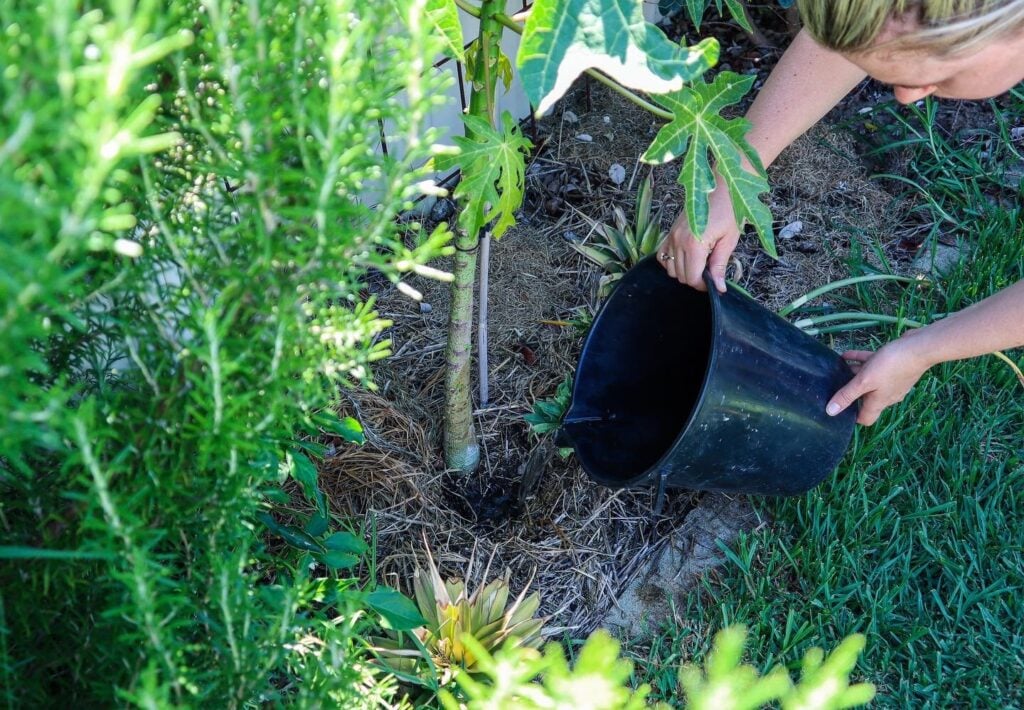
13. Worm Tea/ Wee
Worm farms are a great way to use up excess food scraps at home and they also produce liquid fertilizer for free! It is full of amazing nutrients that your plants will LOVE! Worms are absolute powerhouses for edible gardens and an incredible asset to any home garden. Plus, you can farm your own organic fertilizers with very little effort!
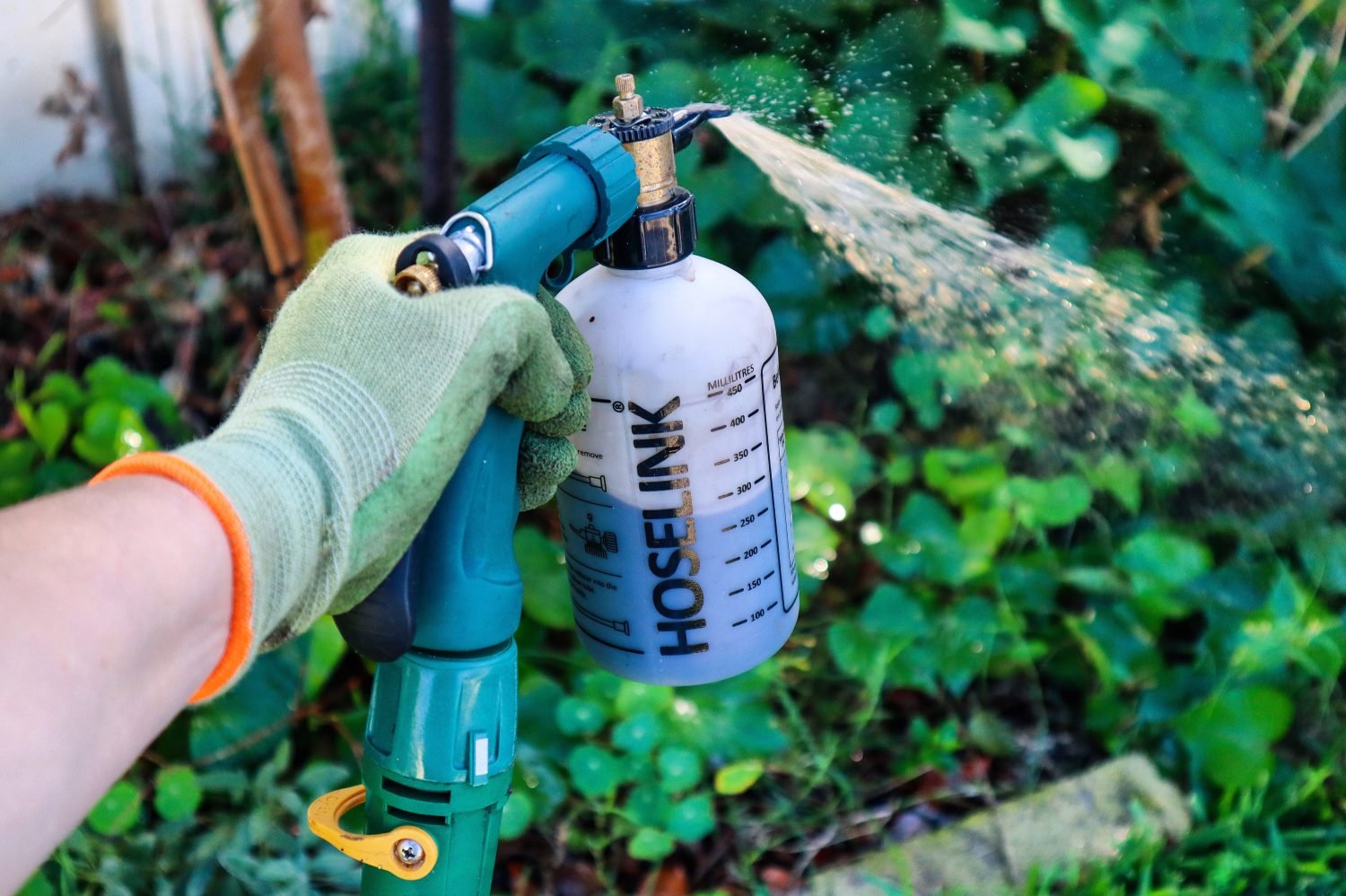
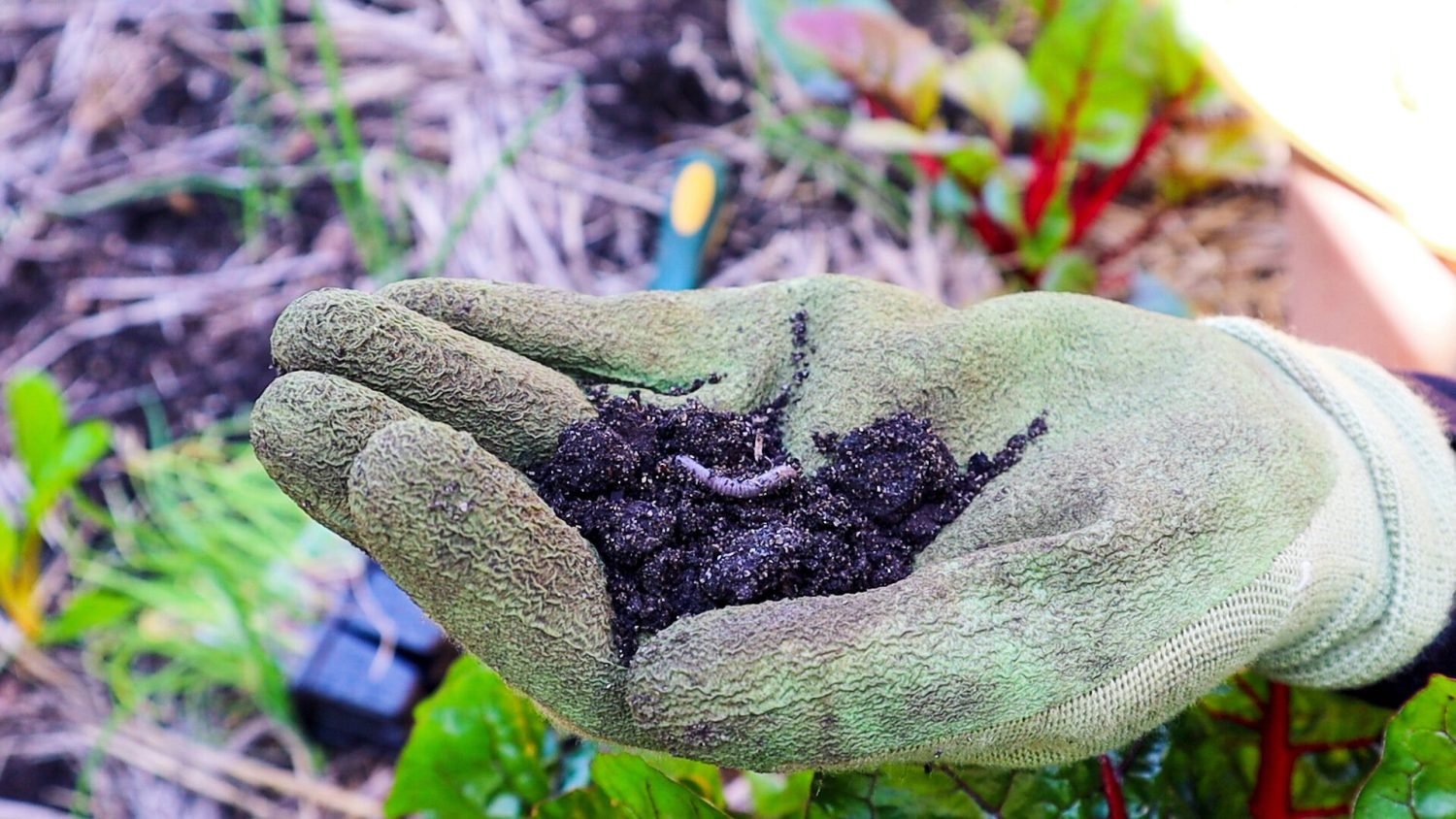
14. Poo Tea / Composted Animal Manure Fertilizer
Composted animal manure is great for feeding the garden. Don’t use fresh, raw manure as it is high in urea and will burn the roots of your small plants. Composted or aged manure is best to use in your home gardens. Ensure that it is organic manure so it doesn’t have residual pesticides, synthetic fertilizers, or antibiotics from the animals. It is also important that it is composted so that any grass seeds consumed by the animal are destroyed. Otherwise, you may have lots of grasses and weeds popping up in your garden.
The composted or aged manure can be mixed into your garden beds or mixed with water to make a liquid fertilizer to spray on your gardens. To make easy organic fertilizers from manure, add a handful of aged manure into a bucket of water and allow it to mix and infuse for a day or so. Giving it a good stir every now and then. This water will then be ready to feed your plants.
15. Weed Tea Fertilizer
Weed tea is made just like comfrey tea. It is a great way to turn pesky weeds into something that actually benefits your garden! Weeds thrive and are full of good nutrients that can be turned into easy organic fertilizers. I have a video on how to make weed tea so I will link that here. The main thing to consider when making weed tea is to kill off and destroy any of the seeds. The rotting process will damage the seeds and stop grasses from being spread around your garden.



Click to WATCH or Read below – 15 Easy Organic Fertilizers to Make at Home

There are so many ways to make easy Organic Fertilizers at home to feed your plants, reduce waste and grow lots more nutritious food! Let me know what you use? Do you use any of these methods or do you have other natural fertilizers?
EXTRA TIP: When using fertilizers in the garden, pull back the mulch to apply the fertilizer. Otherwise, the bark or mulch may absorb all the nutrients and they won’t make it to the plant’s root systems. Pull back the mulch, apply the fertilizer and wait for it to absorb into the soil before recovering with the mulch.
Subscribe to my YouTube Channel for more videos on how to grow food naturally and sustainably.
Happy Gardening
Holly 🌱
MY GARDENING ESSENTIALS //
Garden Bag: https://bit.ly/3t5zc6h
Pink Secateurs: https://bit.ly/3qytl6s
Fertiliser spray gun: https://bit.ly/366nL1t
Retractable Hose: https://bit.ly/2TSC0Bo
More gardening tools: https://bit.ly/32IQmbD
DISCLAIMER: Links included in this description might be affiliate links. If you purchase a product or service with the links that I provide I may receive a small commission. There is no additional charge to you! Thank you for supporting my page so I can continue to provide you with free content!


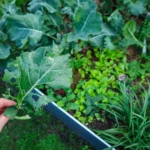
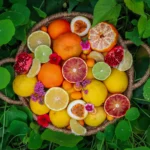
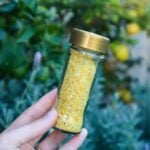
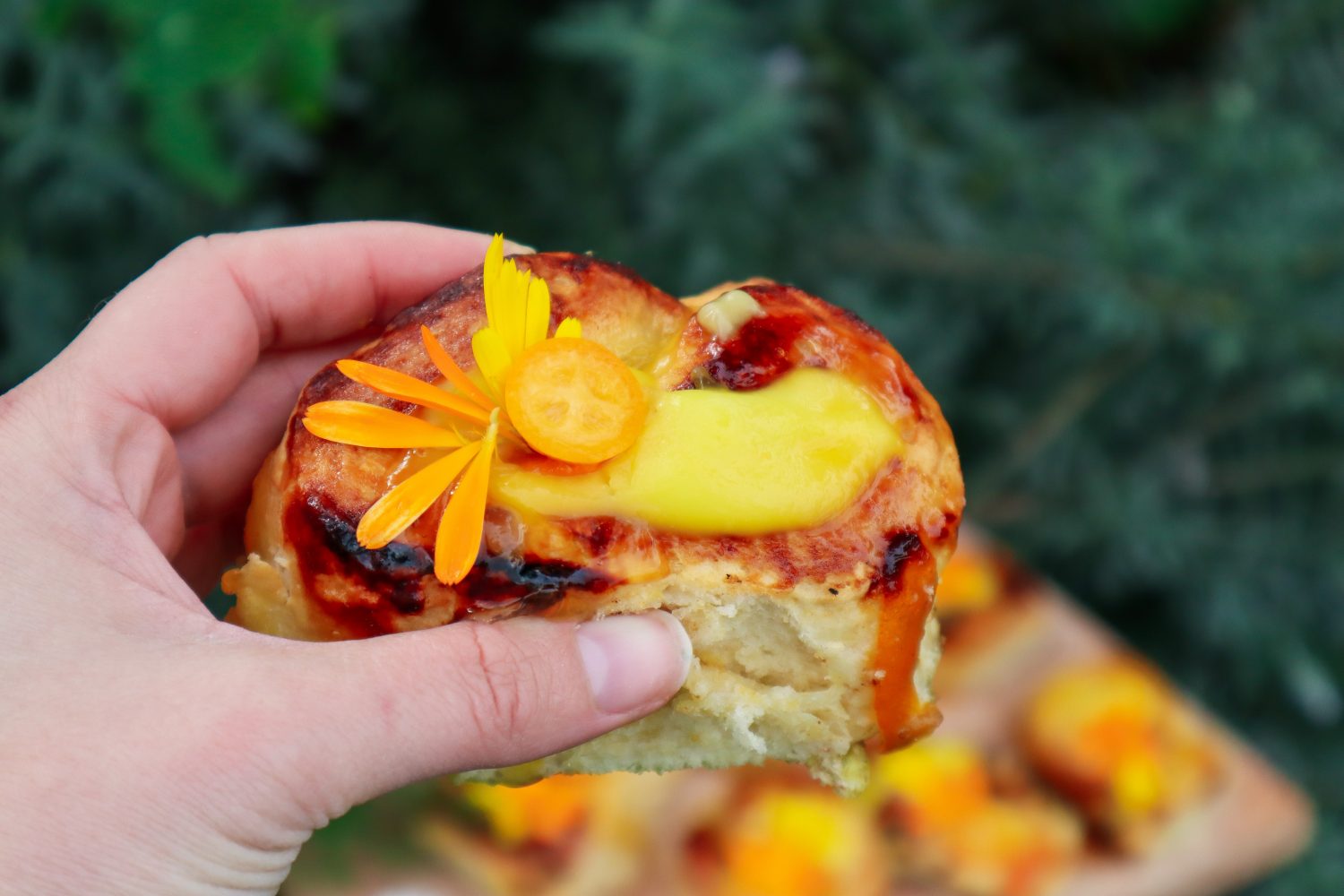
Useful!
Thank you 😊
Informative Blog.
I am learning this blog.
thanx for this article.
Thanks Holly. So many useful ideas that I had just been tipping down the drain 😳
Thank you! My own Perth garden will love these tips
Thanks for the information which is useful.
Thank you! Very educational!
Thank you for sharing the informative article.9
Thank you for sharing the informative article.
Thank you for sharing the informative article.
Thank you for sharing the informative article.
Thank you for sharing the informative article.